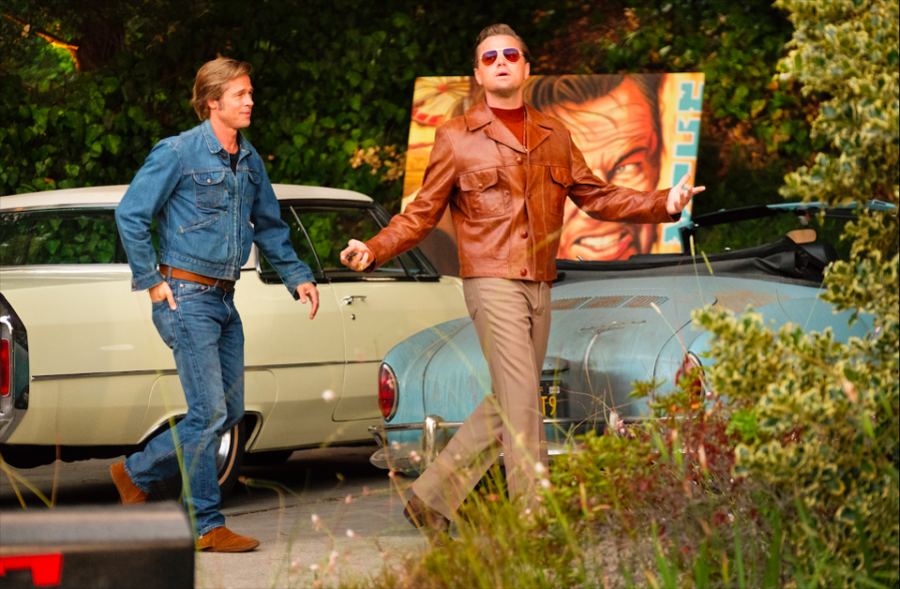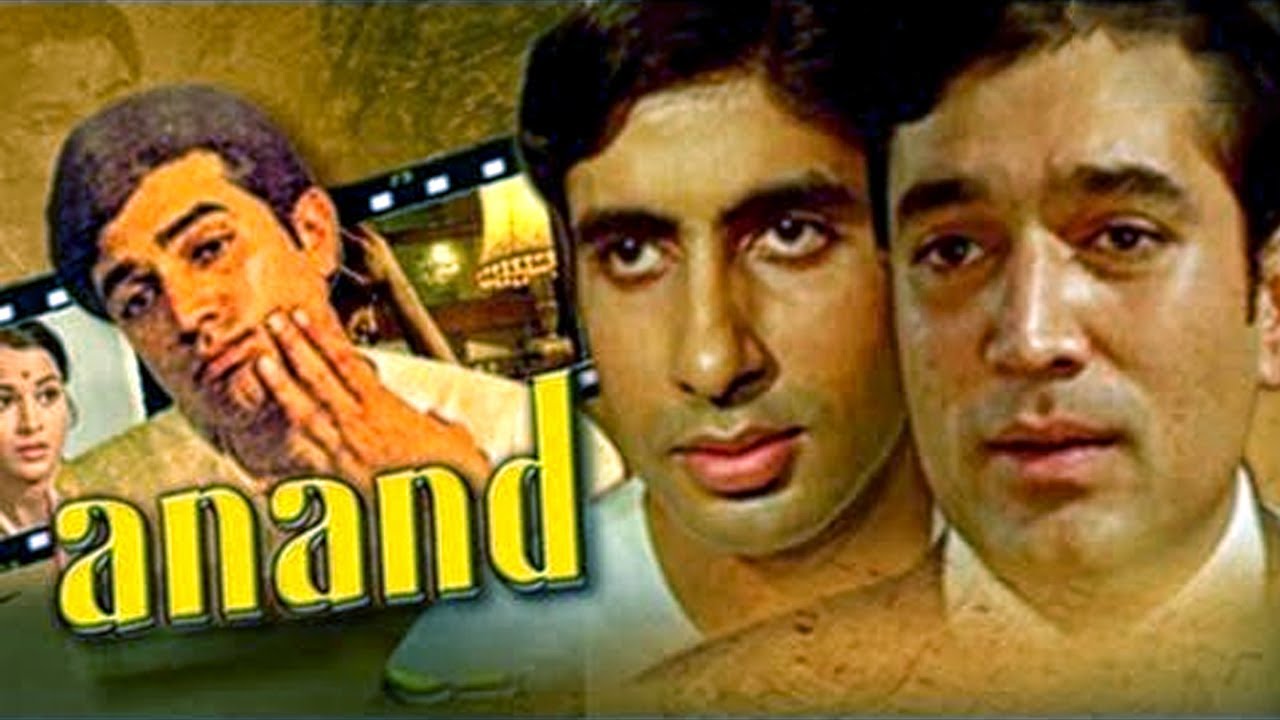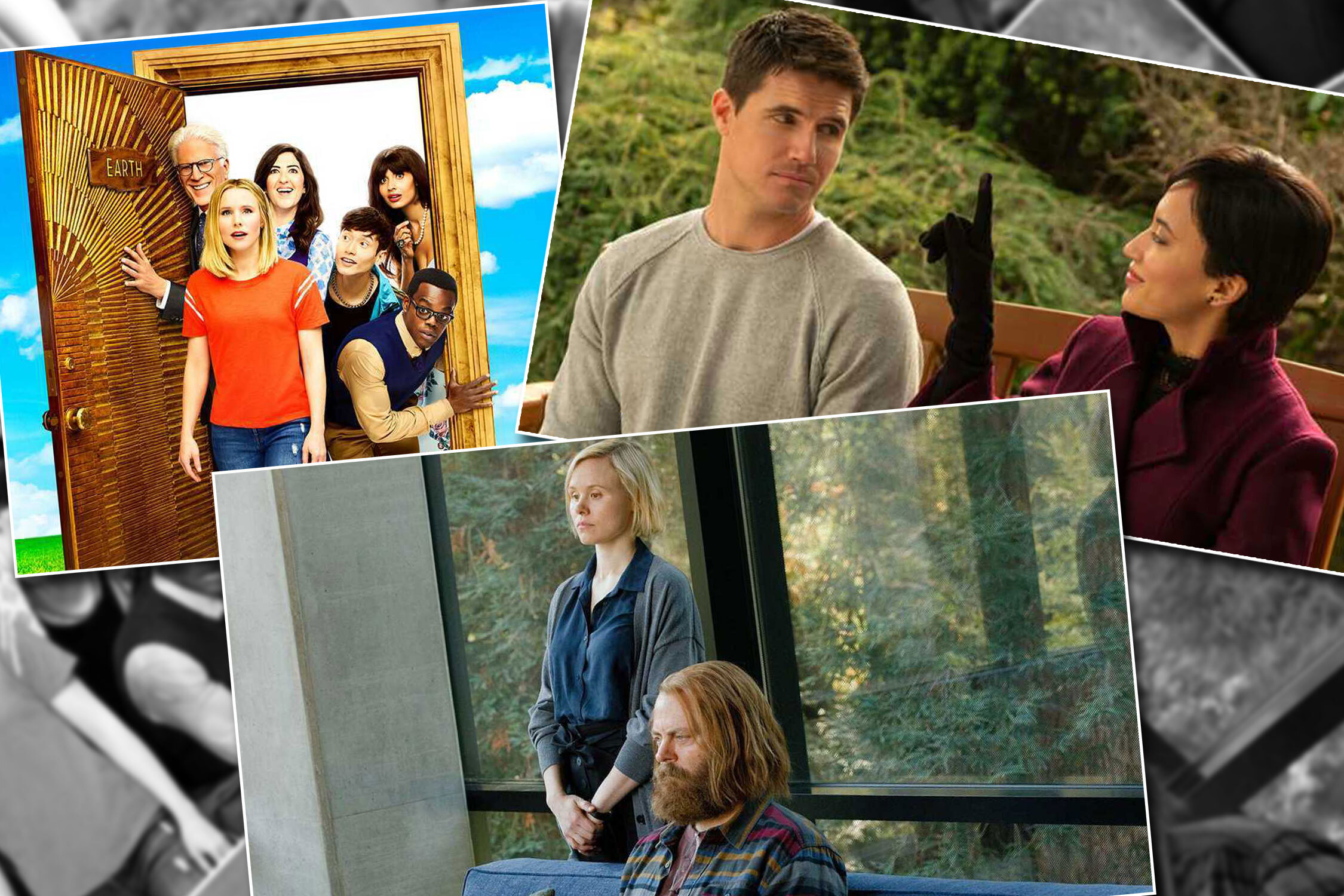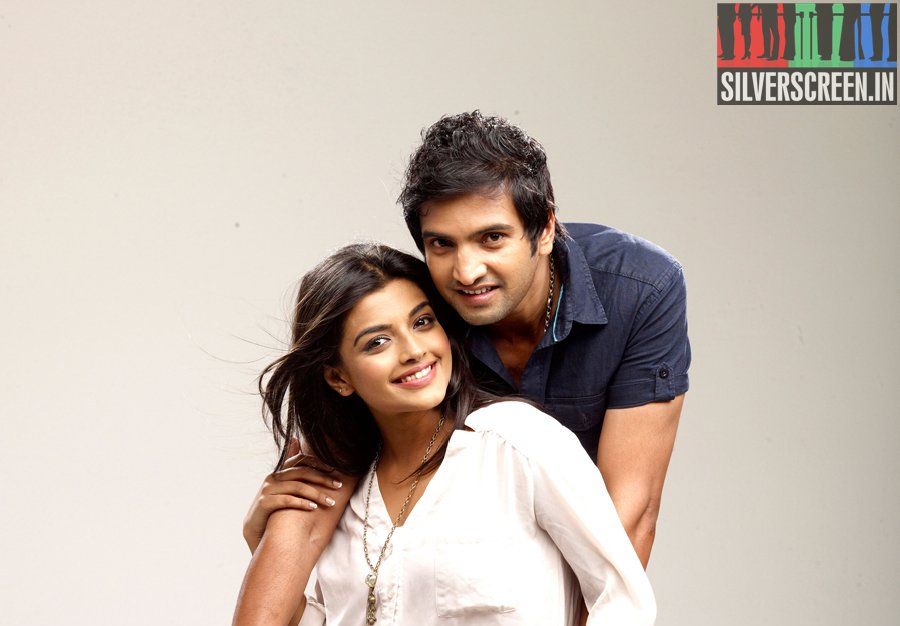Cinematically speaking, Once Upon a Time in Hollywood is Tarantino’s most unconventional film so far, but it’s also perhaps his most reactionary work.
Leonardo DiCaprio portrays actor Rick Dalton, once a leading man of TV westerns now cast as the villain, and Brad Pitt plays Cliff Booth, his stunt double and right-hand man who is also out of work and subsidised by the actor. DiCaprio and Pitt play them with a Southern drawl (carried over from their previous appearances in Tarantino films), as though they were simply extensions of the characters they play on-screen. Their Dalton and Booth (Protestant, old-worldly names) are living relics out of sync with the times. Dalton is a distant cousin of the character DiCaprio played in Revolutionary Road (2008) and is modelled on a straitlaced, middle-class, Eisenhower-era executive. He lives alone in a suburban mansion at the edge of Beverly Hills, spends his day at the studio working and his evenings at home preparing for his roles or watching himself on television. He prefers beer over drugs, abstains from parties or pub-hopping and detests those hippies knocking about town.
Booth, on the other hand, lives with his dog in a trailer behind a drive-in theatre. He drives Dalton around and runs errands for him. The unequal power relation between the two is mitigated by the fact that they share a genuine bond (“Don’t cry in front of the Mexicans”). The professional obsolescence the two characters face is a symptom of the larger societal changes of the decade they are shielded from. Hollywood is drawing new blood, which, from Dalton’s and Booth’s perspective, are outsider figures such Sharon Tate (Margot Robbie), Roman Polanski (Rafał Zawierucha) and Bruce Lee (Mike Moh).
It’s 1969, the year Easy Rider enshrined hippiedom and two years after Bonnie and Clyde romanticised criminals as real heroes. Nixon has been elected president and protests against the ongoing war in Vietnam are at their peak. There’s a cultural-historical revision afoot in Hollywood. Filmmakers such as Arthur Penn, Sam Peckinpah and Robert Altman are turning the ideology of old narratives inside out, positing that the white man might perhaps not be the saviour of the world after all. This change coincides with Dalton’s displacement from the centre into villainous roles, wearing biker-hippie clothes.
Dalton and Booth respect their places in the hierarchical world they embody: Booth lives in the valley, Dalton in the hills, Polanski and Tate even higher. When Booth drives to the Spahn Ranch, once a studio, now populated by Charlie Manson’s followers (one of whom is played by feminist sweetheart Lena Dunham), he is scandalised by their encroachment of private property. Dalton, who owns a mansion, is enraged when noisy intruders infringe his privacy; he exercises his Second Amendment rights, stocking a flamethrower in his house. Dalton and Booth, in their understanding, are the original inhabitants of a place now being occupied by outsiders.
Both men have a strained, somewhat desexualised relationship with women, paralleling Tarantino’s own view of his lady characters. Dalton doesn’t bring them home and prefers the company of the more-than-brother-less-than-wife Booth. The first and only woman in his life comes in the form of his Italian wife, whom he abandons on their first night back home to hang out with Booth. Cliff, who turns down a soliciting Mansonite girl, is said to have killed his wife, but no one knows for sure. A brief flashback shows him with his nagging spouse on a boat, but nothing else. Tarantino’s decision to bring up this accessory detail only to suspend it as dubious industry legend reeks of a scepticism that has noxious implications in a post-Weinstein Hollywood. The wives of Dalton and Booth are presented as indulgent shrews asking for it and the only other women the men encounter are the Mansonites; except Tate, who comes across as an embodiment of purity and innocence untainted by her surroundings.
So, in the absence of any contradicting information, Tarantino’s film neatly pits macho, relatively decent, law-abiding, Christian white men against hippies, immigrants, squatters, libertines, druggies, cultists, and women—the poster-children of the counterculture movement. For all the cathartic relief its denial of a historical tragedy brings, the film’s ending, with two white men saving a pregnant woman and her household from invaders, has a jarring contemporary resonance.
The graphic, men-on-women violence the film showcases—and asks its audience to partake in—is intended to save the pure maternal figure: a conflict that stems from a binary vision of womanhood long outmoded. The larger connotation, that the country needs valiant war heroes, like Booth once was, to save it from anti-social elements who don’t belong here, serves as a right-wing dog whistle well in line with certain political sentiments in the US today. (This radicalism is not to be conflated with the classic conservatism of Eastwood and Spielberg.) Moreover, the choice of flamethrower as a weapon and the image of a charred corpse floating in water register as distasteful echoes of the Vietnam War brewing in the film’s background.
Maybe, Tarantino is describing, through Dalton and Booth, old Hollywood as it was — the can of dog food entertainingly smashed on a woman’s face is simply an extension of the grapefruit on Mae Clarke’s. The dilemma the film proposes is perhaps that a desire to see old Hollywood persist means to accede to its unsavoury aspects as well. But we never get a sense of what new Hollywood stood for or the changing mores it represented — the very reasons enabling the idea of an “old Hollywood”.
Save for a coy pool party Tate attends, the film is tightly bound to Dalton’s and Booth’s view of events. It could be argued that this tale of a woman saved from unspeakable tragedy by chivalrous machismo is a compensatory fantasy of men losing their power — Booth’s fight with Bruce Lee is given, after all, as his recollection. However, in the absence of any framing device, this fantasy becomes the filmmaker’s own. Compare this to Altman’s Buffalo Bill (1976), where the yearning for an old world is constantly interrogated, turned upon itself. An otherwise self-aware filmmaker, Tarantino chooses to not contextualise Dalton and Booth’s perspective.
Or, maybe, Tarantino decided that the best way to pay tribute to the upheavals of new Hollywood was to make a film that’s as amoral and provocative as Bonnie and Clyde, and that provocation, today, means to go against the liberal pieties of his industry. For all their shocks, Inglourious Basterds and Django Unchained were on “the right side of history”, somewhat softening the enfant terrible image Tarantino had cultivated till that point.
Hateful Eight can be seen, in this light, as a statement of non-alignment, the image of a woman (whose character Tarantino equated with a Mansonite) strung up by a black man and a white man encapsulating the film’s ideology. In this new film, he has managed to stir up the dominant, liberal side of film culture by taking a political U-turn. For, taboo-breaking in our time starts with the thought that “everything’s too PC these days”.
Srikanth is a film critic, curator and translator who writes at theseventhart.info



